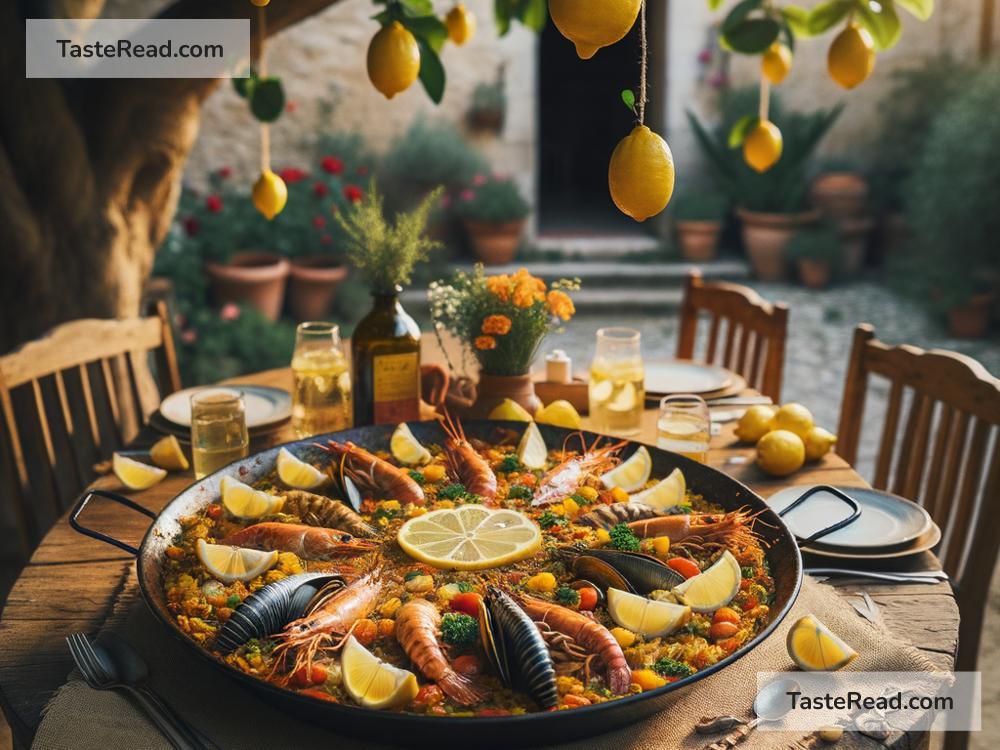Exploring the Story Behind the Spanish Paella
When you think of Spain, what comes to mind? For many, it’s images of flamboyant flamenco dancers, lively fiestas, and, of course, the mouth-watering Spanish cuisine, with Paella taking a proud and prominent spot. Paella, more than just a dish, is an experience that blends flavors, traditions, and cultures. Its journey from the humble fields of Valencia to becoming a universal symbol of Spanish gastronomy is a tale worth tasting.
The Roots of Paella
Our story begins in the lush, verdant fields of Valencia, a region on Spain’s southeastern coast, considered by many to be the cradle of paella. Originally, paella was a simple, rustic meal prepared by farmers and laborers. It was cooked over an open fire in the fields, meant to fuel a day’s hard work. The word “paella” itself comes from the Latin word for pan, ‘patella’, which evolved into the Valencian ‘paella’, indicating the wide, shallow pan used to cook the dish. This pan is critical, as its design allows the rice to cook evenly and acquire the much-coveted ‘socarrat’ or slightly crispy bottom.
The Ingredients: A Melting Pot of Cultures
What makes paella truly fascinating is how it encapsulates the history and diversity of the cultures that have crossed through Spain. The base of paella is rice, and it’s no coincidence that the Moors who occupied Spain for hundreds of years introduced rice cultivation to Valencia. The availability of ingredients such as saffron and various spices also owes a lot to the Moorish influence.
Originally, paella was made with what was on hand and typically included a mix of snails and rabbit or duck, along with a few green beans and perhaps a tomato. But as the dish traveled from the countryside to the coast, seafood found its way into the pan. This adaptability is key to understanding paella’s essence: it’s a dish that reflects the environment and the season, a principle that remains true in its preparation today.
The Evolution of a National Treasure
Paella’s journey from a local Valencian dish to a national treasure mirrors the transformation of Spanish society over the centuries. As people moved across regions, they carried their culinary traditions with them, but always adapted to local tastes and available ingredients. In the 19th century, as domestic tourism in Spain grew, so too did the popularity of paella. Visitors to Valencia fell in love with the dish and brought their newfound culinary affection back home, thus beginning the nationalization of paella.
Today, paella is celebrated across Spain, though you’ll find passionate debates about what constitutes an authentic paella. Some purists argue that true paella is strictly the Valencian variety, laden with chicken, rabbit, green beans, and snails. Others embrace a more inclusive definition that welcomes seafood, chorizo, and peas. Yet, regardless of the ingredients, the spirit of paella – a dish meant to be shared – remains unchanged.
The Paella Today: Global Ambassador of Spanish Cuisine
Paella has transcended Spanish borders to become a global phenomenon, a dish that is known and loved around the world. Its universal appeal lies not just in its delicious flavor but in its ability to bring people together. Cooking paella is often a communal activity, enjoyed with family and friends, and this social aspect is integral to its identity.
However, as paella garners global fame, so does the challenge of preserving its authenticity. In response, enthusiasts and chefs around the world strive to honor the traditional techniques and recipes, even as they experiment with new variations. This dynamic balance between tradition and innovation ensures that paella remains both a beloved legacy and a living, evolving tradition.
Conclusion
The story of paella is a rich tapestry woven from the many cultures that have shaped Spain’s history. It’s a story of adaptation and fusion, reflecting Spain’s diverse natural landscapes and culinary traditions. More than just rice in a pan, paella encapsulates a way of life: one that values sharing, openness, and joy in life’s simple pleasures. Whether you’re savoring a seafood-laden paella by the seaside or enjoying a traditional Valencian paella in the countryside, you’re partaking in a tradition that goes beyond food, into the heart of Spanish culture itself. So, the next time you dip your spoon into a steaming pan of paella, remember, you’re not just eating – you’re experiencing a piece of history.


